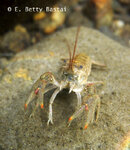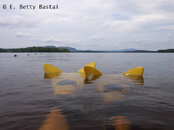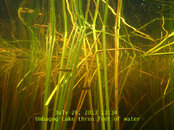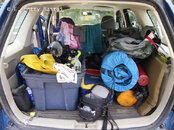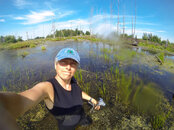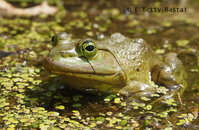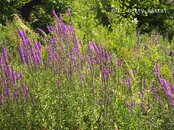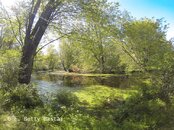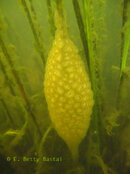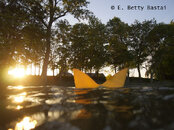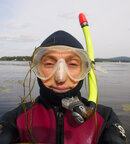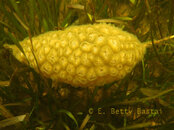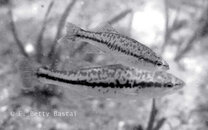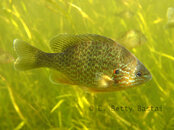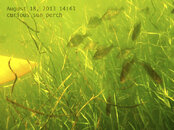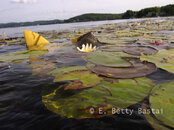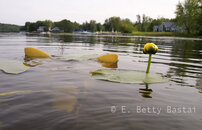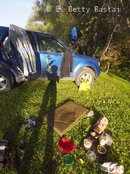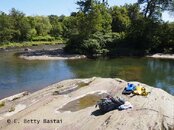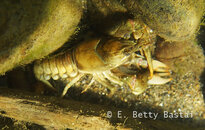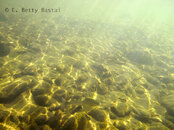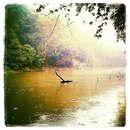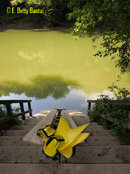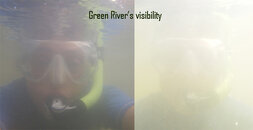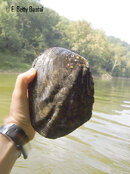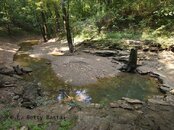Playing with scuba bubbles at Lake Willoughby, VT
A couple of weeks ago I took another break from editing. I wanted to snorkel in one of the clearest lakes of Vermont. I did a Google search and a travel forum showed up on the screen with various names of lakes and ponds. After further reading, I decided to try the water of Lake Willoughby, a glacial lake that, according to Wikipedia, is 300 ft. deep and it is considered the deepest lake located within the state boundaries.
Lake Willoughby is a fairly large scenic lake whose southern end is flanked by steep rock cliffs. While I was driving along the curvy and narrow road on the eastern shore of the lake looking for access to the water I noticed a couple of people assembling scuba gear at a pullover. They were the first scuba divers that I encountered since my trip to Upper Saranac Lake, NY.
I decided to stop and park there. The divers were from Québec. They picked that spot because they wanted to do a deep dive. At that pullover the shore drops down almost vertically and it's easy to go really deep quickly. Certainly it was a good place to practice deep diving but its rocky structure was not very suitable for aquatic plants and the wildlife that goes with them. Then a more positive thought crossed my mind:"I bet that this bottom covered with stones, rocks and boulders of all sort of sizes is a crayfish paradise."
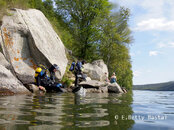
The water turned to be one of the clearest that I had swam so far. However it was full of suspended particles so it was not really crystal clear. During my first snorkeling session I decided to follow the divers' bubbles and look for crayfish later. When I am diving I don't scrutinize the bubbles that I or other divers produce; they travel to the surface above my head disappearing from view and that's the end of their story.
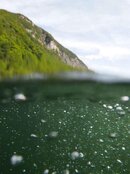
This time I was curious to know what is was like to immerse myself into those bubbles. It was pretty amazing. It was like to be inside a hot tub with good visibility. The bubbles had a 'heavier presence' than common standard ones because they looked coated with a thin layer of lead or silver.
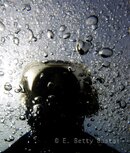
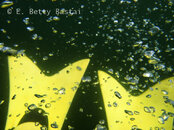
When I was through with the scuba bubbles I swam to shore and warmed up on a large flat rock like a marine iguana. Then, I snorkeled in few feet of water scouting the bottom for crayfish. It did not pass much time that they began to appear all over but they were very wary. A soon they sensed something was not quite right, excessive water movement or the approach of a huge shadow, they would retreat in holes and crannies disappearing from view. I had never had such a hard time in photographing these critters. I don't know why but lake WA crayfish seemed a bit friendlier. Lake Willoughby crayfish can truly test the patience of a saint!
After countless tries I finally managed to take some pictures of those fellows. I also did a little experiment. T one point, I was facing one crayfish desperately trying not to scare it off. At the right moment I slowly and gently touched the tip of one of its antennas with one of my fingertips and then wow! It looked like I gave it a high voltage electric shock! It totally freaked out and swam backward as fast as it could to get the hell out of my sight! I concluded that crayfish eyesight must not be very good but those antennas… What sensitive appendages!
Then, unexpectedly, while I was swimming back to my point of entry, I bumped into a large crayfish that behaved differently from all the others. It had a bolder personality. Instead of slowly retreating underneath a rock it kept marching at a steady pace toward me with its claws wide open! The whole scene was rather comical considering that I must have been 1000 times larger than the crustacean. Its bravery really made my day!
